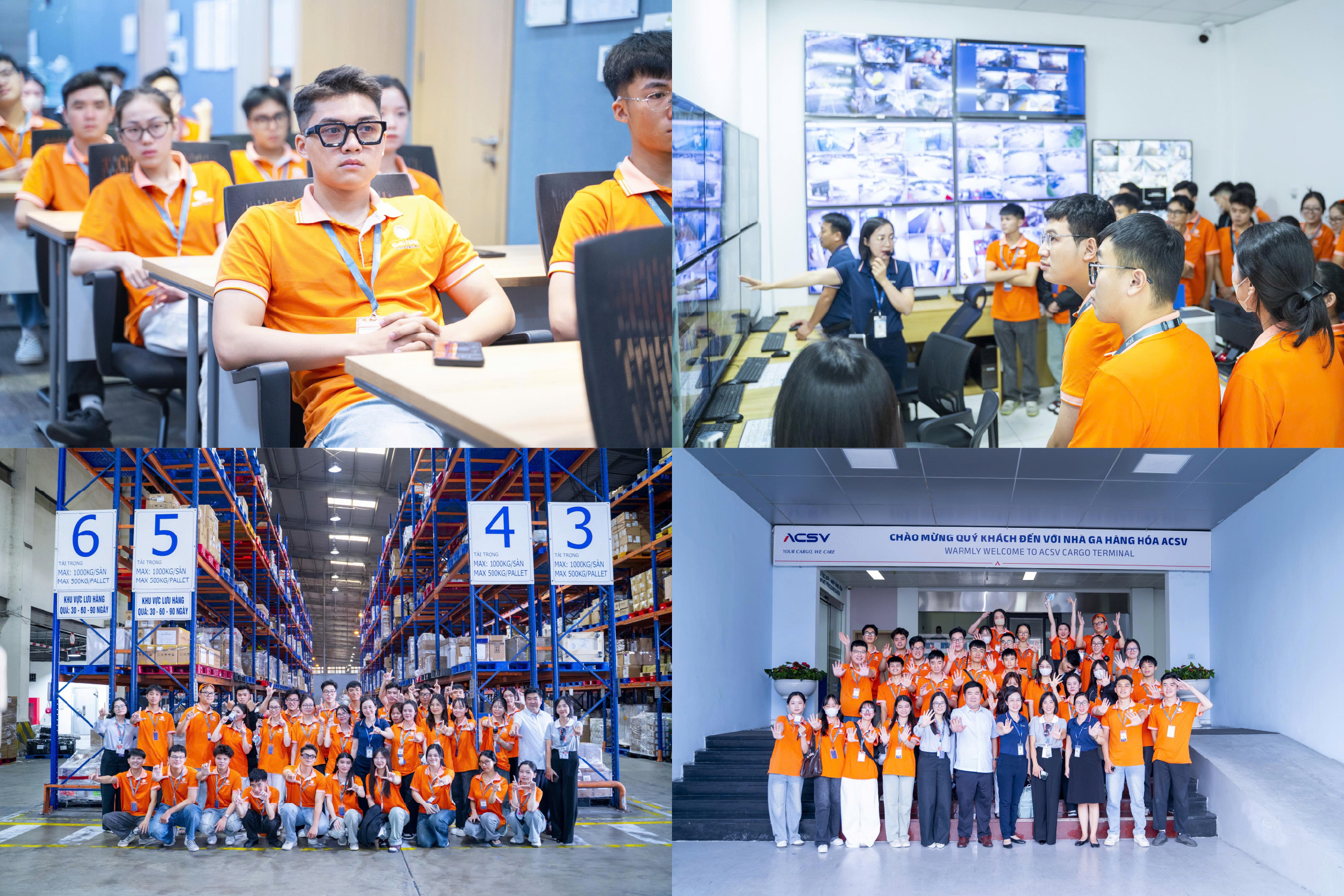Decision on promulgating the Regulations on developing undergraduate training programs of Dai Nam University
Posted date 07/10/2019
view

MINISTRY OF EDUCATION AND TRAINING SOCIALIST REPUBLIC OF VIETNAM
DAI NAM UNIVERSITY Independence - Freedom - Happiness
Number: /QĐĐN - DT Hanoi, August 8, 2018
DECISION
Number: /QĐĐN - DT Hanoi, August 8, 2018
DECISION
On promulgating regulations on training program development
University degree of Dai Nam University
University degree of Dai Nam University
PRESIDENT OF DAI NAM UNIVERSITY
Pursuant to Decision No. 1535/QD-TTg dated November 14, 2007 of the Prime Minister on the establishment of Dai Nam University;
Pursuant to Decision No. 54/QD-DN dated December 25, 2008 of the Chairman of the Board of Directors on promulgating the Regulations on Organization and Operation of Dai Nam University;
Pursuant to Circular 04/2016/TT-BGDDT dated March 14, 2016 of the Ministry of Education and Training promulgating Regulations on standards for assessing the quality of training programs at all levels of higher education;
Pursuant to Circular No. 12/2017/TT-BGDDT dated May 19, 2017 of the Ministry of Education and Training promulgating Regulations on quality assessment of higher education institutions;
Pursuant to Circular 07/2015/2017/TT-BGDDT dated April 16, 2015 of the Ministry of Education and Training promulgating the Regulations on the minimum amount of knowledge, capacity requirements that learners must achieve after graduation for each training level of higher education and the process of developing, appraising and promulgating training programs for university, master's and doctoral levels;
Pursuant to Decision No. 1982/QD-TTg dated October 18, 2006 of the Prime Minister on approving the Vietnam National Qualifications Framework;
Pursuant to Circular 22/2017/TT-BGDDT dated September 6, 2017 of the Ministry of Education and Training promulgating Regulations on conditions, order, procedures for opening training majors and suspending enrollment, revoking decisions on opening university-level training majors;
Pursuant to Decision No. 03/QD-DHDN dated January 4, 2016 of the President of Dai Nam University on promulgating the Regulations on regular university and college training according to the credit system of Dai Nam University.
Consider the proposal of the Head of Training Department.
DECISION
Article 1: To issue with this Decision the "Regulations on developing university training programs of Dai Nam University".
Article 2: This Regulation takes effect from the date of signing. Previous regulations contrary to this Regulation are hereby annulled.
Article 3: Head of Training Department, heads of relevant units are responsible for implementing this decision./.
Recipient: PRINCIPAL
Pursuant to Decision No. 54/QD-DN dated December 25, 2008 of the Chairman of the Board of Directors on promulgating the Regulations on Organization and Operation of Dai Nam University;
Pursuant to Circular 04/2016/TT-BGDDT dated March 14, 2016 of the Ministry of Education and Training promulgating Regulations on standards for assessing the quality of training programs at all levels of higher education;
Pursuant to Circular No. 12/2017/TT-BGDDT dated May 19, 2017 of the Ministry of Education and Training promulgating Regulations on quality assessment of higher education institutions;
Pursuant to Circular 07/2015/2017/TT-BGDDT dated April 16, 2015 of the Ministry of Education and Training promulgating the Regulations on the minimum amount of knowledge, capacity requirements that learners must achieve after graduation for each training level of higher education and the process of developing, appraising and promulgating training programs for university, master's and doctoral levels;
Pursuant to Decision No. 1982/QD-TTg dated October 18, 2006 of the Prime Minister on approving the Vietnam National Qualifications Framework;
Pursuant to Circular 22/2017/TT-BGDDT dated September 6, 2017 of the Ministry of Education and Training promulgating Regulations on conditions, order, procedures for opening training majors and suspending enrollment, revoking decisions on opening university-level training majors;
Pursuant to Decision No. 03/QD-DHDN dated January 4, 2016 of the President of Dai Nam University on promulgating the Regulations on regular university and college training according to the credit system of Dai Nam University.
Consider the proposal of the Head of Training Department.
DECISION
Article 1: To issue with this Decision the "Regulations on developing university training programs of Dai Nam University".
Article 2: This Regulation takes effect from the date of signing. Previous regulations contrary to this Regulation are hereby annulled.
Article 3: Head of Training Department, heads of relevant units are responsible for implementing this decision./.
Recipient: PRINCIPAL
- Board of Directors to report
- As article 3 to implement
- School website for announcement
- Save: VT, DT
Dr. Luong Cao Dong
Chapter I
COMMON ISSUES
Article 1 : Scope of regulation and applicable subjects
This document regulates the development of undergraduate training programs at Dai Nam University, including: Building new training programs; reviewing, updating, adjusting and innovating training programs of faculties/centers.
Article 2: Concepts and terms
COMMON ISSUES
Article 1 : Scope of regulation and applicable subjects
This document regulates the development of undergraduate training programs at Dai Nam University, including: Building new training programs; reviewing, updating, adjusting and innovating training programs of faculties/centers.
Article 2: Concepts and terms
- The training process includes developing and applying output standards (UES), training programs, teaching and learning methods (including scientific research), implementing training programs, testing, evaluating learning outcomes and granting graduation certificates.
- The training program's CDR is the minimum requirement for knowledge, skills, level of autonomy and personal responsibility that learners achieve after completing the training program, committed to learners, society and publicly announced along with conditions to ensure implementation.
- Training program at a specific level of a field of study includes: Objectives, training outcomes; training content, methods and activities; material and technical facilities, organizational structure, functions, tasks and academic activities of the unit assigned to implement training in that field of study.
- The teaching program of a training program at a specific level includes: General objectives, specific objectives and learning outcomes of each course; training content, assessment methods, duration of the training program and each course.
- Stakeholders of the training unit include: Learners, lecturers, staff, leadership and management team, employers, partners, learners' families, investors, direct management agencies, state management agencies of education, other relevant organizations and individuals.
- Educational philosophy is a set of core views that guide educational goals, teaching content and methods, and the roles of teachers and learners in educational activities.
Chapter II
MINIMUM AMOUNT OF KNOWLEDGE AND COMPETENCIES THAT STUDENTS SHOULD ACHIEV AFTER GRADUATION FROM UNIVERSITY
Article 3: The minimum amount of knowledge for university level is: 120 credits for 4-year training program, 150 credits for 5-year training program and 180 credits for 6-year training program.
Article 4: Requirements on the capacity that students achieve after graduation
- General requirements
Learners meet general requirements on professional competence and ethics, attitude towards compliance with occupational safety principles, political theory level, knowledge of National Defense - Security, Physical Education, foreign language standards according to current regulations and basic information technology skills standards according to regulations of the Ministry of Information and Communications.
- Minimum competency requirements
- Knowledge
Have in-depth theoretical knowledge in the field of training; master techniques and have practical knowledge to be able to solve complex tasks; accumulate professional knowledge, natural and social laws in the field of training to develop new knowledge and be able to continue studying at a higher level; have knowledge of management, operation, law and environmental protection related to the field of training.
- Skill
Have the skills to complete complex tasks requiring the application of theoretical and practical knowledge of the trained field in different contexts; have the skills to analyze, synthesize, evaluate data and information, synthesize collective opinions and use new achievements in science and technology to solve practical or abstract problems in the trained field; have the ability to lead expertise to handle local and regional scale problems;
Have foreign language skills to understand issues related to the trained industry; can use foreign languages to express and handle some common professional situations; can write simple reports and present opinions related to professional work;
c) Self-control and responsibility
Have the ability to lead in specialized and professional fields that have been trained; have initiatives in the process of performing assigned tasks; have the ability to self-orient; adapt to different working environments; self-study, accumulate knowledge and experience to improve professional and technical qualifications; have the ability to draw conclusions on common specialized and professional issues and some complex technical issues; have the ability to plan, coordinate, promote collective intelligence; have the ability to evaluate and improve specialized activities on a medium scale.
Chapter III
TRAINING PROGRAM DEVELOPMENT
Article 5: Principles of training program development
Have foreign language skills to understand issues related to the trained industry; can use foreign languages to express and handle some common professional situations; can write simple reports and present opinions related to professional work;
c) Self-control and responsibility
Have the ability to lead in specialized and professional fields that have been trained; have initiatives in the process of performing assigned tasks; have the ability to self-orient; adapt to different working environments; self-study, accumulate knowledge and experience to improve professional and technical qualifications; have the ability to draw conclusions on common specialized and professional issues and some complex technical issues; have the ability to plan, coordinate, promote collective intelligence; have the ability to evaluate and improve specialized activities on a medium scale.
Chapter III
TRAINING PROGRAM DEVELOPMENT
Article 5: Principles of training program development
- The training program must reflect the school's educational philosophy.
- The training program is built in accordance with the national qualification framework.
- The training program is designed based on the learning outcomes. The contribution of each course to achieving the learning outcomes is clear.
- Ensure that the courses complement, support each other and are closely related; have a logical structure and sequence.
- The number of credits of a course should be designed from 02 credits or more, except for practical and experimental courses.
- Interweaving the process of professional and vocational learning with skills training. The training program integrates the development of skills and moral qualities through the content of each subject and group of subjects according to the teaching order of the subjects shown through the comparison table of the learning outcomes of each subject and each block of knowledge contributing to the learning outcomes of the training program.
- Responding to social needs
Article 6: Steps to develop training programs
Step 1: Establish a Training Program Drafting Team
The Principal establishes a Training Program Drafting Team (hereinafter referred to as the Drafting Team) and appoints a Head of the Drafting Team based on the proposal of the Head of the specialized department. Members of the Drafting Team are those who are knowledgeable about the training industry/specialization and have the capacity to build and develop the Training Program, including: representatives of the Board of Directors, representatives of the Training Department, representatives of related professional units, lecturers in the training industry/specialization, scientists, education experts and other related members according to the requirements of the training industry/specialization and representatives of the labor-using establishments in the industry/specialization. The Principal decides on the number of members participating in the Drafting Team.
Step 2: Survey and determine human resource needs according to the level of the training industry/specialization; survey the needs of employers for graduates of the training industry/specialization combined with the requirements on the minimum amount of knowledge and the requirements on the capacity that learners achieve after graduation.
The drafting team develops a survey form (investigating human resource needs, employer needs , planning the survey, determining the information to be collected, the subjects and time of the survey, estimating the survey budget and conducting the survey of relevant groups of subjects.
Step 3: Develop general goals, specific goals and training objectives
The drafting team studies current training programs of prestigious training institutions in the country and abroad, consults with experts, develops general goals, specific goals, and expected training outcomes. The product of this step is the draft general goals, specific goals, and training outcomes of the training program.
Step 4: Determine the structure and amount of knowledge required for the training program, build a training program that ensures training objectives and CDR.
Based on the general objectives, specific objectives and expected CDR, the Drafting Team builds a training program framework with knowledge blocks of subjects in each knowledge block and the relationship between subjects.
Step 5: The drafting team compares and contrasts the current university training programs of the same major/specialization at prestigious training institutions in the country and abroad, consults with experts, and completes the draft training program. The product of this step is the first draft of the training program.
Step 6: Get feedback from managers, scientists, lecturers, employers, and alumni.
The drafting team builds a survey form ( target survey, CDR and training framework), makes a survey plan, determines the information to be collected, the subjects and time of the survey, estimates the budget for the survey and conducts surveys of related groups of subjects (such as the subjects of the training program's CDR survey, survey with CDR - The process of building CDR is carried out according to the Regulations of Dai Nam University) . On the basis of processing the survey and related information, complete the 2nd Draft of the training program .
Step 7: Design detailed outlines of courses according to the determined training program.
Step 1: Establish a Training Program Drafting Team
The Principal establishes a Training Program Drafting Team (hereinafter referred to as the Drafting Team) and appoints a Head of the Drafting Team based on the proposal of the Head of the specialized department. Members of the Drafting Team are those who are knowledgeable about the training industry/specialization and have the capacity to build and develop the Training Program, including: representatives of the Board of Directors, representatives of the Training Department, representatives of related professional units, lecturers in the training industry/specialization, scientists, education experts and other related members according to the requirements of the training industry/specialization and representatives of the labor-using establishments in the industry/specialization. The Principal decides on the number of members participating in the Drafting Team.
Step 2: Survey and determine human resource needs according to the level of the training industry/specialization; survey the needs of employers for graduates of the training industry/specialization combined with the requirements on the minimum amount of knowledge and the requirements on the capacity that learners achieve after graduation.
The drafting team develops a survey form (investigating human resource needs, employer needs , planning the survey, determining the information to be collected, the subjects and time of the survey, estimating the survey budget and conducting the survey of relevant groups of subjects.
Step 3: Develop general goals, specific goals and training objectives
The drafting team studies current training programs of prestigious training institutions in the country and abroad, consults with experts, develops general goals, specific goals, and expected training outcomes. The product of this step is the draft general goals, specific goals, and training outcomes of the training program.
Step 4: Determine the structure and amount of knowledge required for the training program, build a training program that ensures training objectives and CDR.
Based on the general objectives, specific objectives and expected CDR, the Drafting Team builds a training program framework with knowledge blocks of subjects in each knowledge block and the relationship between subjects.
Step 5: The drafting team compares and contrasts the current university training programs of the same major/specialization at prestigious training institutions in the country and abroad, consults with experts, and completes the draft training program. The product of this step is the first draft of the training program.
Step 6: Get feedback from managers, scientists, lecturers, employers, and alumni.
The drafting team builds a survey form ( target survey, CDR and training framework), makes a survey plan, determines the information to be collected, the subjects and time of the survey, estimates the budget for the survey and conducts surveys of related groups of subjects (such as the subjects of the training program's CDR survey, survey with CDR - The process of building CDR is carried out according to the Regulations of Dai Nam University) . On the basis of processing the survey and related information, complete the 2nd Draft of the training program .
Step 7: Design detailed outlines of courses according to the determined training program.
- Organize the development of the curriculum for each subject in the 2nd Draft of the training program according to the training program's curriculum objectives in the following order:
- The Head of the training unit organizes a workshop on building CDR for the modules in the training program from the CDR of the training program, the Head of the department organizes building CDR for each module;
- The Head of the Faculty organizes a meeting of the Faculty Council to evaluate and give comments on the course evaluation results;
- The head of the department organizes the adjustment of the course's CDR according to the conclusion of the Faculty Council;
The result of this step is the integrated learning outcomes in the modules, demonstrating the contribution of the modules to the formation of the proposed training program's learning outcomes related to the training program's learning outcomes.
- The scientific council determines the order of implementation of knowledge blocks and modules to achieve the optimal CDR. The order of modules clearly describes the development of knowledge, skills and moral qualities through research and study in one or more subjects in a certain period or throughout the entire training process. This is the basis for completing the 2nd Draft of the Training Program.
- The head of the department organizes the design of detailed outlines of the courses according to the training program's course objectives.
Step 8: Organize a workshop to collect opinions from lecturers, managers inside and outside the training institution, scientists, representatives of relevant employers and graduates (if any) about the training program.
The head of the training unit organizes a public workshop to collect comments from managers, scientists, experts, representatives of graduate recruitment establishments, lecturers, students and alumni, etc. The product of this step is the Minutes of the Workshop to collect comments .
Step 9: Finalize the draft training program based on feedback from relevant parties and submit it to the Faculty Council for consideration.
Based on the comments of managers, scientists, experts, representatives of graduate recruitment institutions, lecturers, students and alumni, etc., the Head of the training unit completes the training program and submits it to the Faculty Council. The product of this step is the 3rd Draft of the Training Program.
Step 10: Appraisal of training program
The appraisal council is responsible for appraising and comparing the training program with the training standards, quality assessment standards and giving comments to complete the training program corresponding to the positioning of the training product (Sample introduction of the list of school-level appraisal councils) .
The appraisal council must clearly conclude one of the following contents: The council approves the training program without any need for revision or supplementation, or the council approves the training program but requires revision or supplementation and states the specific content that needs to be revised or supplemented, or the council does not approve the training program and states the reason for non-approval (Sample minutes of training program appraisal meeting).
Article 7: Organization of training program assessment
The head of the training unit organizes a public workshop to collect comments from managers, scientists, experts, representatives of graduate recruitment establishments, lecturers, students and alumni, etc. The product of this step is the Minutes of the Workshop to collect comments .
Step 9: Finalize the draft training program based on feedback from relevant parties and submit it to the Faculty Council for consideration.
Based on the comments of managers, scientists, experts, representatives of graduate recruitment institutions, lecturers, students and alumni, etc., the Head of the training unit completes the training program and submits it to the Faculty Council. The product of this step is the 3rd Draft of the Training Program.
Step 10: Appraisal of training program
The appraisal council is responsible for appraising and comparing the training program with the training standards, quality assessment standards and giving comments to complete the training program corresponding to the positioning of the training product (Sample introduction of the list of school-level appraisal councils) .
The appraisal council must clearly conclude one of the following contents: The council approves the training program without any need for revision or supplementation, or the council approves the training program but requires revision or supplementation and states the specific content that needs to be revised or supplemented, or the council does not approve the training program and states the reason for non-approval (Sample minutes of training program appraisal meeting).
Article 7: Organization of training program assessment
- Appraisal documents include:
- Project for new construction of training program;
- Minutes of the Workshop on giving opinions on building CDR and building training programs;
- Expected list of members of the school-level appraisal council, including experts inside and outside the training unit representing the institution employing the graduates.
The school-level appraisal council has at least 5 members, including a doctorate degree or higher in the same field/specialty as the appraisal program; including at least one representative of the post-training labor-using units (in case there is no representative of the labor-using unit qualified to participate in the school-level appraisal council, a person with a master's degree of 3 years or more in the same field of training and at least 5 years of practical experience in the field of the training program can be invited to participate as a member of the training program appraisal council); members of the drafting team do not participate in the school-level appraisal council. Training institutions are encouraged to invite prestigious lecturers from foreign universities to participate in the appraisal council.
- The principal decides to establish a school-level appraisal council and organize the appraisal. The appraisal council meeting must be recorded in detailed minutes; including comments from the reviewers (with attached comments); vote counting results (with attached vote counting minutes) and conclusions of the school-level appraisal council, signed by the council members;
The school-level appraisal council consists of 01 Chairman, 01 Secretary and at least 03 members, including 02 reviewers from 02 different training institutions (in case the program to be appraised belongs to a new industry/specialty, and there is no training institution in Vietnam, the appraisal council consists of people who meet the standards according to this regulation in a related industry, have researched and published at least one scientific work related to the program to be appraised (except for the representative member of the employer). The training institution with the program to be appraised does not participate or only sends one person to participate in the appraisal council;
- The head of the training unit completes the training program and submits it to the Training Department no later than 2 weeks from the date of assessment.
- The Principal signs the decision to issue the training program based on the proposal of the scientific and training council; publicly announces the training program, objectives, training outcomes and conditions to ensure implementation on the School's training information website.
Article 8: Review, evaluate, update, adjust and innovate training program content.
- Every 2 years, training units must review, update and adjust training programs.
- Updating and adjusting must ensure that the training program is kept relatively stable for the entire course and is carried out according to Clause 3 of this Article.
- Every 2 years, the Head of the training unit must organize an assessment of the training program to renew the training program. The renewal of the training program is carried out according to Clause 3 of this Article.
- Training evaluation requires evidence of input survey data , processes, and output data.
- Input data includes curriculum, training program, course outline, teaching methods, learning, testing, assessment, current status of facilities and other resources.
- The processes include teaching, testing, evaluation, etc.
- Output data includes learning outcomes, student employment and development direction, and the level of achieving the CDR of the entire training program. Collect evidence to serve the evaluation of the training program through:
- Learning materials related to the training program (objectives, learning outcomes, curriculum framework, course outline, facilities, teaching and learning methods);
- Individual and group interviews;
- Use survey;
- Teaching diary
- Use external evaluators;
- Track student learning outcomes over time.
The above evidence is collected regularly and used in self-assessment and annual assessment to review, update, adjust and innovate the content of the training program.
- Process of reviewing, evaluating, updating, adjusting and innovating the program :
Step 1: Establish a review team
The Principal establishes a Review Team. Requirements on composition, standards, and number of members of the Review Team are as stated in Clause 1, Article 6 of this Regulation.
Step 2: Plan to review, evaluate, update, adjust and innovate the training program;
Step 3: Collect information and evidence related to the need to update, adjust and innovate the training program (changes in regulations of the State and training institutions on training programs; new advances in scientific fields in the industry and major; refer to training programs of prestigious schools at home and abroad; socio-economic issues, research results related to training programs; feedback from relevant parties; changes in subjects or professional content, etc.).
Step 4: Develop and evaluate the reliability and accuracy of the assessment method in the following order:
(1): Statistics of assessment and evaluation methods used at the School according to the training program review cycle.
(2): Collect score distribution statistics and get students' feedback on assessment methods; consult experts on assessment methods; Compare with course objectives.
(3): Process the statistical data in step 2 based on a random sample of about 100 tests to estimate the reliability and accuracy of the assessment method.
(4): Select appropriate assessment methods based on the results of step 3 (first draft).
(5): Verify the reliability and accuracy of the assessment method through steps 2 and 3.
(6): Decide on the appropriate assessment method based on the results of step 5.
Step 5: Evaluate and develop an evaluation report on the effectiveness of the training program being implemented (meeting the determined objectives and goals; consistency and coherence between program content, assessment methods, learning and teaching resources, etc.); compare the research results on training program development requirements and the level of meeting the requirements of the training program being implemented; predict the impact of changing and updating the training program (Survey form has similar content to the appendix, etc.);
Step 6: Draft the contents that need to be revised, updated, and renewed in the training program and submit them to the faculty council for consideration and approval (Appendix …);
Step 7: The Faculty Council reviews and approves the content of the revised, updated, and renewed training program and submits it to the Principal for promulgation of the revised and supplemented training program. If necessary, the Faculty Council decides to appraise the revised and supplemented training program according to Article 6 of this Regulation (Appendix ...);
Chapter IV
TERMS OF IMPLEMENTATION
Article 9: Implementation
The Principal establishes a Review Team. Requirements on composition, standards, and number of members of the Review Team are as stated in Clause 1, Article 6 of this Regulation.
Step 2: Plan to review, evaluate, update, adjust and innovate the training program;
Step 3: Collect information and evidence related to the need to update, adjust and innovate the training program (changes in regulations of the State and training institutions on training programs; new advances in scientific fields in the industry and major; refer to training programs of prestigious schools at home and abroad; socio-economic issues, research results related to training programs; feedback from relevant parties; changes in subjects or professional content, etc.).
Step 4: Develop and evaluate the reliability and accuracy of the assessment method in the following order:
(1): Statistics of assessment and evaluation methods used at the School according to the training program review cycle.
(2): Collect score distribution statistics and get students' feedback on assessment methods; consult experts on assessment methods; Compare with course objectives.
(3): Process the statistical data in step 2 based on a random sample of about 100 tests to estimate the reliability and accuracy of the assessment method.
(4): Select appropriate assessment methods based on the results of step 3 (first draft).
(5): Verify the reliability and accuracy of the assessment method through steps 2 and 3.
(6): Decide on the appropriate assessment method based on the results of step 5.
Step 5: Evaluate and develop an evaluation report on the effectiveness of the training program being implemented (meeting the determined objectives and goals; consistency and coherence between program content, assessment methods, learning and teaching resources, etc.); compare the research results on training program development requirements and the level of meeting the requirements of the training program being implemented; predict the impact of changing and updating the training program (Survey form has similar content to the appendix, etc.);
Step 6: Draft the contents that need to be revised, updated, and renewed in the training program and submit them to the faculty council for consideration and approval (Appendix …);
Step 7: The Faculty Council reviews and approves the content of the revised, updated, and renewed training program and submits it to the Principal for promulgation of the revised and supplemented training program. If necessary, the Faculty Council decides to appraise the revised and supplemented training program according to Article 6 of this Regulation (Appendix ...);
Chapter IV
TERMS OF IMPLEMENTATION
Article 9: Implementation
- The issued training program is the legal basis for training implementation.
- The Training Department is responsible for guiding faculties in building and developing training programs; organizing the acceptance of school-level training programs; coordinating with the Testing & Quality Assurance Department, the Finance - Accounting Department and related units to develop projects to open new majors and training programs and submit them to the Principal for approval.
- Every year, faculties develop plans and complete the review and development of their training programs. The development of training programs is carried out in accordance with this Regulation and Circular No. 22/2017/TT-BGDDT dated September 6, 2017 of the Ministry of Education and Training promulgating regulations on conditions, procedures for opening training majors and suspending enrollment, revoking decisions on opening training majors at university level.
Article 10: Validity of the Regulations
This regulation applies from the date of signing. Previous regulations of the School that are different from this Regulation are hereby repealed. During the implementation process, depending on the actual situation, adjustments and supplements will be studied and made accordingly.
This regulation applies from the date of signing. Previous regulations of the School that are different from this Regulation are hereby repealed. During the implementation process, depending on the actual situation, adjustments and supplements will be studied and made accordingly.







